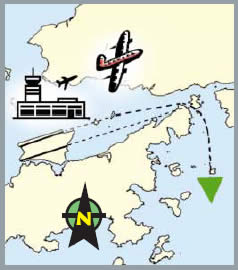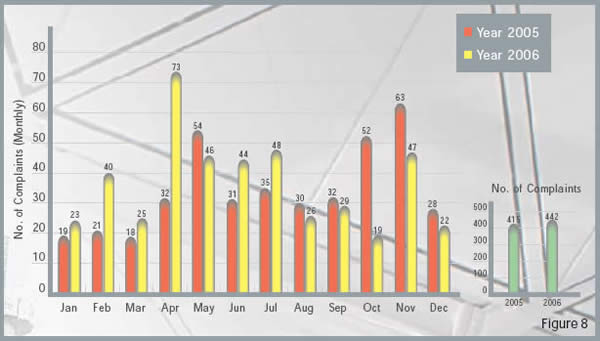 |
|||||||||
Chapter 4 - Managing Aircraft Noise
Minimising noise impacts requires balancing the needs of various stakeholders, including affected households and the aviation industry. This process of liaison is pictured in the diagram below(Figure 5).
As the diagram shows, we also continuously monitor aircraft noise and implement noise-mitigating measures wherever possible, and always strive to achieve cost-effective solutions. In addition, we disseminate relevant noise data and closely monitor the aviation technology developments with a view to introducing new technology on aircraft noise reduction. Using Flight Paths Over Water to Minimise Noise - Night Arrivals To keep aircraft noise impacts to populated areas to an absolute minimum in the night-time hours, so long as weather and flight conditions allow, we require arriving aircraft to approach the airport from the southwest, so that they approach over water, and depart via the West Lamma Channel.
These two arrangements ensure that during the overnight period, populated areas such as Sha Tin, Tsuen Wan, Kwai Chung, Tsing Yi, Sham Tseng and Tsing Lung Tau are not affected by noise from arriving aircraft, while districts like Kowloon, North Point, Shau Kei Wan and Chai Wan are not affected by noise from departing aircraft. Our Performance in 2006 Statistical data show that in 2006, only 88.1% of all night arrivals were able to land from the southwest. This figure was higher than the 86.9% of 2005 but still fell short of the 90% target (Figure 6).
We achieved more success with night departures. In 2006, 99.1% (2005, also 99.1%) of all night departures were via the West Lamma Channel (Figure 7).
Target for 2007 In 2007, we will retain the aforementioned 90% and 95% targets respectively for night arrivals and departures over water. Quieter Arrivals Even when weather and flight conditions require night arrivals to approach from the northeast, we encourage aircraft to adopt the Continuous Descent Approach (CDA) between the hours of 11:00pm to 7:00am. By this procedure, aircraft would fly higher, and adopt a lower power and drag configuration as they begin their approach, thus minimising night-time aircraft noise impacts in areas such as Sai Kung, Tseung Kwan O and Ma On Shan.
Quieter Departures Whenever it is deemed necessary for aircraft to depart to the northeast, they are required to use Noise Abatement Departure Procedures (NADP) so long as safe flight operations permit. Prescribed by the International Civil Aviation Organization (ICAO)*, these procedures require aircraft to commence engine power reduction in the initial phase of take-off at heights as low as 800 feet. This reduces the noise impact on affected households in the vicinity of the airport when aircraft are required to depart to the northeast.
Keeping Noisy Aircraft Out of Hong Kong Since 1 July 2002, old and noisy "Chapter 2" (#1) aircraft types that create serious noise pollution have been banned from using Hong Kong International Airport. Only newer and quieter "Chapter 3" (#2) aircraft are allowed to land in Hong Kong. Target for 2007 To protect residents from unnecessary aircraft noise, the ban on Chapter 2 aircraft will remain in place.
Working with the Public
Noise Data We regularly uploaded new noise data to our website in 2006, enabling all members of the public to access our aircraft noise information.
Noise Monitoring We continued to use a sophisticated computer-based Aircraft Noise and Flight Tracking Monitoring System (ANFTMS) to closely monitor aircraft noise in the vicinity of the flight paths in 2006. This system comprised 16 fixed noise monitors(Figure 9) which continually collect noise data on a real-time basis. All noise data were automatically correlated with the radar information on flight tracks, enabling us to compile accurate statistics on aircraft noise and more effectively investigate any noise complaints.
|






